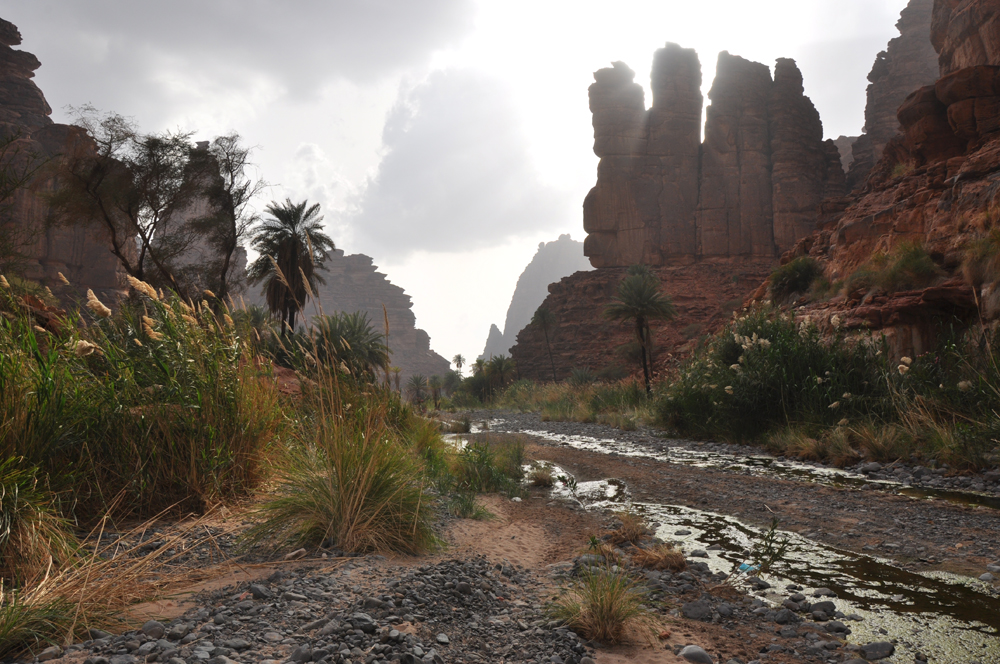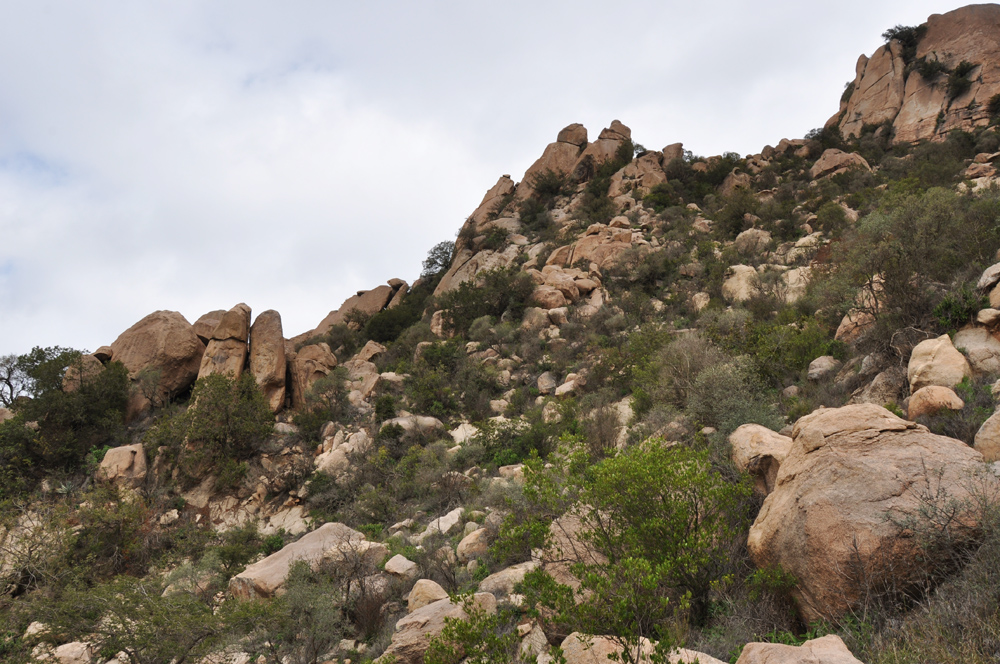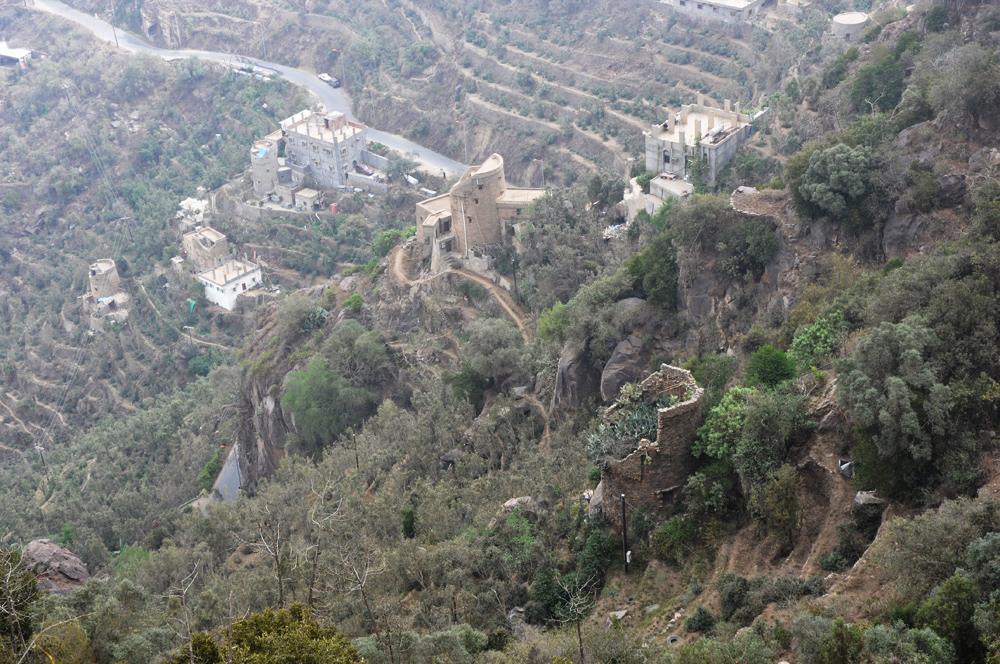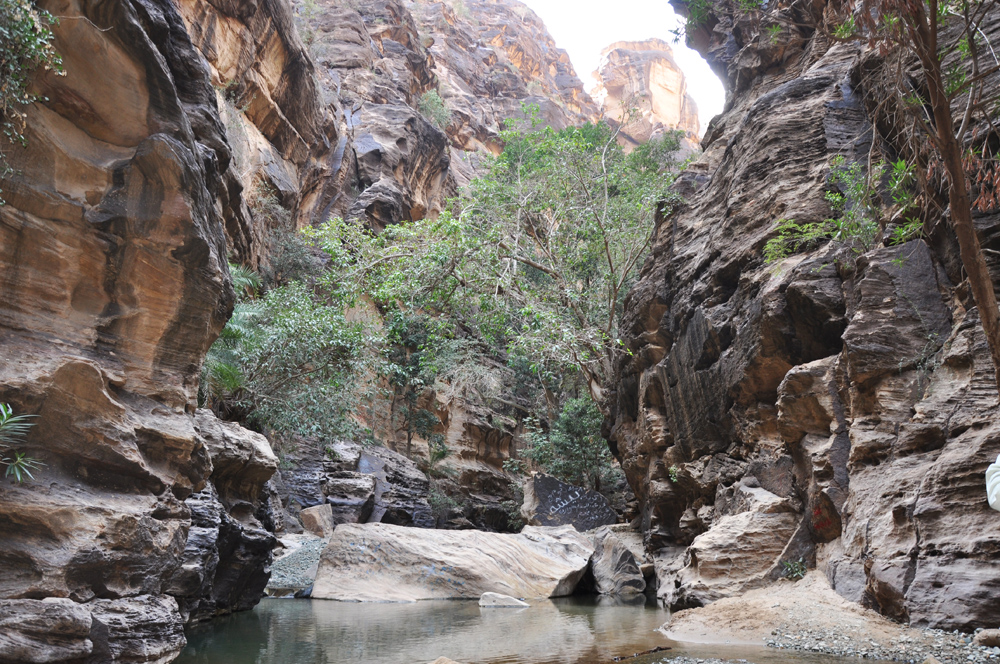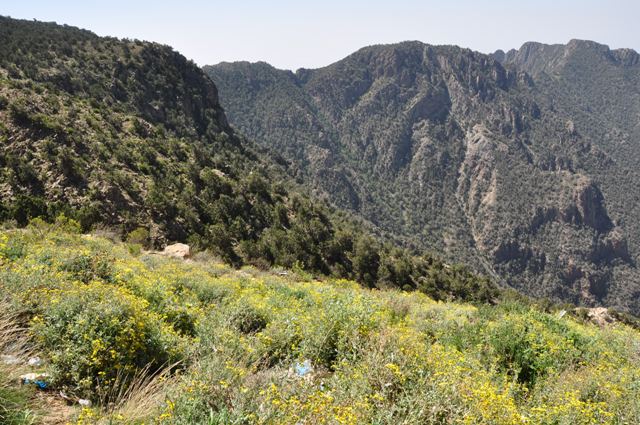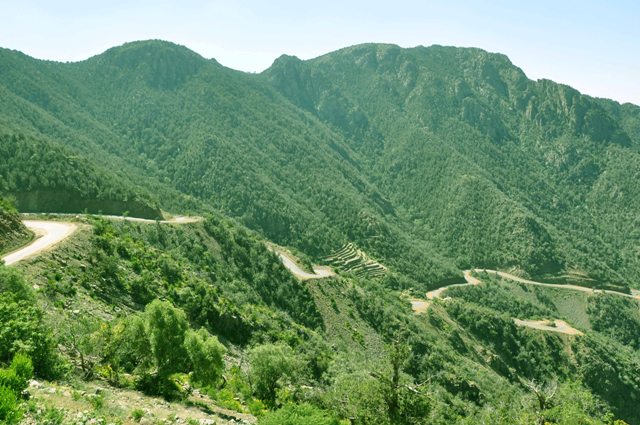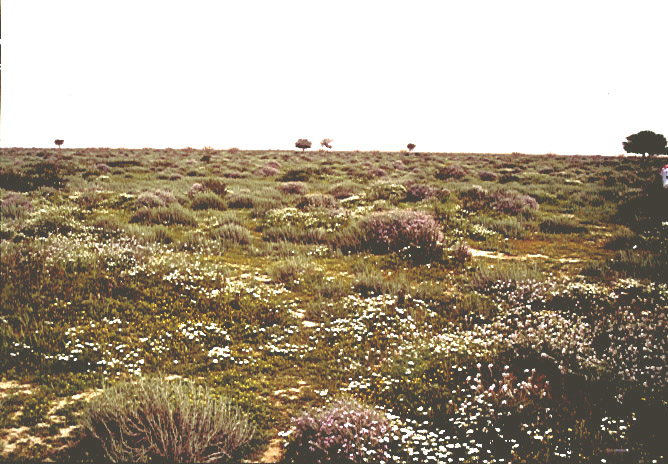Plant Diversity Hotspots in Saudi Arabia
The most important topographic and floristic diversity of Saudi Arabia can be seen in the mountainous North and South Hijaz regions, stretching parallel to the Red Sea coast. Various scientists and explorers have carried out several studies during the past few decades to explore the vegetation of these regions. The mountains of south western region are more or less continuous with peaks reach elevations of over 2000 m in the vicinity of Taif and over 3000 m southwards, towards Abha. The stony mountains in the north-western region, on the other hand, are generally discontinuous with peaks reach between 1500-2800 m. Isolated mountains in north central Saudi Arabia and an arch like Jabal Tuwaiq, extending the entire central region are less elevated, ranging between 1000-1500 m. Unlike the vegetation of northern and southern Hijaz Mountains, the vegetation in other parts of the country including that of sand seas and range lands in the central and northern region is less important in terms species diversity.
The vegetation of Raida escarpments (1500-2800 m), previously an inaccessible one due to the region’s steep slopes, is now facing degradation because of increased pastoral activity. Though this escarpment is protected and containing a large number of trees including Juniper forests in pristine conditions, the populations of a moderate number of species, including some of the rare species such as Huernia saudi-arabica, Ceropegia spp., Scadoxus multiflorus, Klenia odora, Adenia venenata etc., are increasingly marginalized during the past few years. All these threatened populations do not have more than 50 plants/10 sq. km.
Mountains in the Fayfa region, close to Yemen borders, and other isolated mountains like Jabal Abu-Hassan also harbor a diverse flora, which is more or less similar to that of East African, one. A considerable number of endemics have also been reported from these regions. Fayfa Mountains (2000 m) which receive a constant moisture-laden breeze on the west facing slopes support the life of many endangered species including few remaining stands of Dracaena ombet, Dorsetnia foetida, Ceropegia spp., Rhytidocaulon spp., etc. Though the mountains in the Saudi-Yemen border do not have any remarkable variation in terms of precipitation and temperature, the density and variation in the vegetation of Yemen are apparently higher than that of the Fayfa Mountains. This is perhaps due to the increased urbanization practices or the effect of centuries-old terraced cultivation on virgin lands. A considerable number of species recorded from the northern mountains of Yemen have so far not been collected from Fayfa Region. The ways to trace those species, which were disappeared from these mountains (local extinction), are virtually, nil, as all previous literature covering this part of the region did not mention any exact collection detail or all collections are from within the borders of Yemen only.
Vegetation in the semi-arid mountains of Jabal Shamanseel (1600 m), Jabal Radhwa (2000 m), Jabal Sha’ar (2350 m) had been studied by Chaudhary et al., 1988). The gullies and slopes of these mountains support a range of wild plants, dominated by Juniperus phoenicea, Delonix elata, Ferula ovina, Pistacia khinjuk, Launaea acanthodes, Commiphora spp. Most of these plants’ populations are reported to be in a critical state due to increased human activities and the poor regeneration by themselves. One of the rare species, Astragalus fruticosus is also reported from the highest elevations of Jabal Sha’ar as an occasional plant. Jabal Lawz (2800 m), the highest mountain in the northern Hijaz also possesses varied vegetation with a strong Mediterrannean influence. Prunus korshinskyi, one of the dominant and high altitude members, is the star attraction of this mountain. It is represented by few plants, and can not be seen anywhere else in the country. In addition to this, the Jabal Sha’ar also houses a number of rare species such as Androssace maxima, Plantago maris-mourtii, Tanacetum santolinoides, Scandix pecten-veneris etc. Jabal Dabbagh (2400 m), a granite mountain in the north west of Saudi Arabia, is remarkable amongst the mountains of northern and southern Hijaz range in terms of endemism. Five endemic taxa occur in this mountain including Delphinium sheilae, Nepeta sheilae and the only monotypic, endemic genus Dolichorynchus arabicus. All these species are rare and need conservation for their continued existence. This habitat also supports one of the last remaining populations of Tulips (Tulipa biflroa). But according to collectors (personnel communication), grazing pressure in this mountain has been intensified in the past few years, that now the fate of this population is unclear.
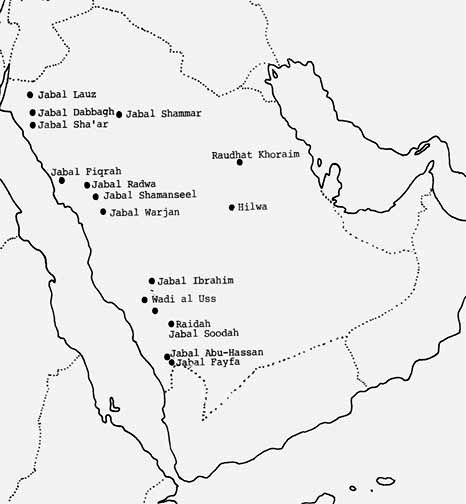
Plant Diversity Hot-Spots of Saudi Arabia
Al-Aridah
Al-Bala
Al-Fiqrah
Al-Wajh Bank
At-Ta’if
Ballasmar
Farasan Islands
Hakimah
Harrat al-Harrah
Hisma
Ibex Reserve
Jabal Abu Hassan
Jabal ad-Dubbagh
Jabal Aja
Jabal al-Lawz
Jabal al-Qahar
Jabal as-Sudah
Jabal Batharah
Jabal Fayfa
Jabal Hashar
Jabal Jandaf
Jabal Radwa
Jabal Salma
Jabal Sha’ar
Jabal Shada
Jabal Shamanseel
Jabal Tallan
Jabal Uthrub
Jabal Wirqan
Jazirat Sharifah
Jibal as-Samrah
Jibal Qaraqir
Majami‘ al-Hadb
Muhayil
Murtafa‘at Najran
Ra’s Kishran
Raudat Khuraim
Raydah
Suq al-Ithnayn (Tamniyah)
Tanumah
Uruq Bani Ma‘arid
Wadi al-Hizmah / Wadi Tathlith
Wadi Ghaythan
Wadi Jawrah
Wadi Lejib
Wadi Maraba
Wadi Sadr
Wadi Tarj
Wadi Tayyah
